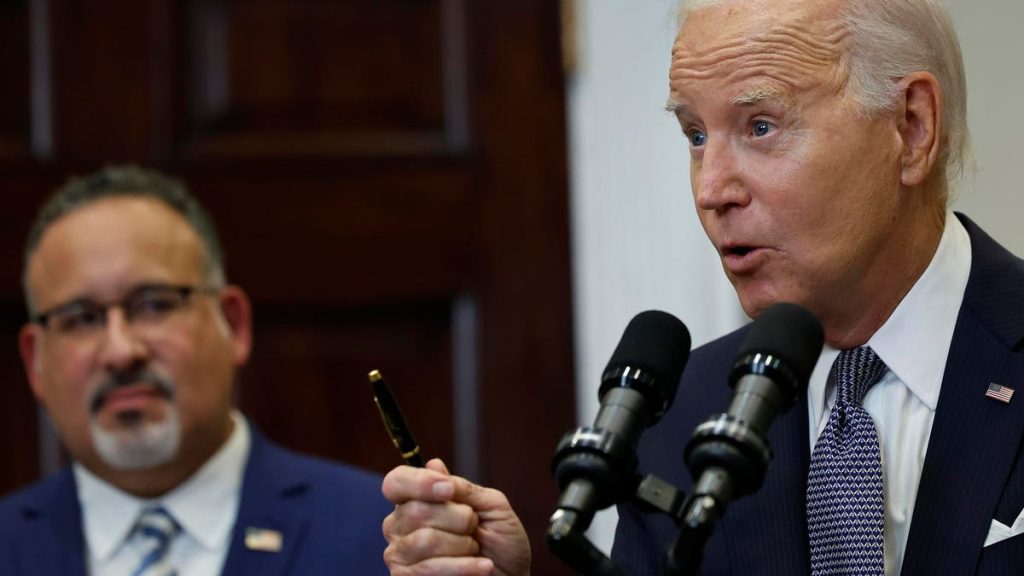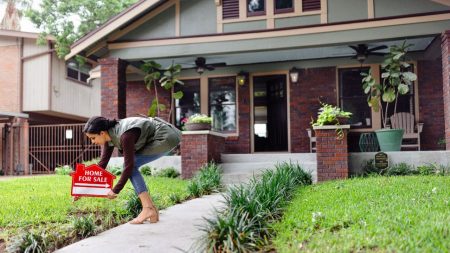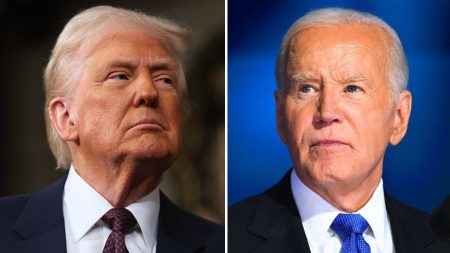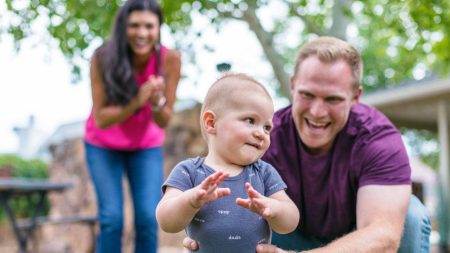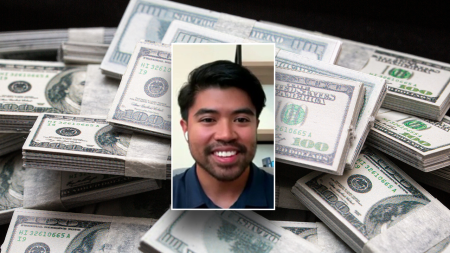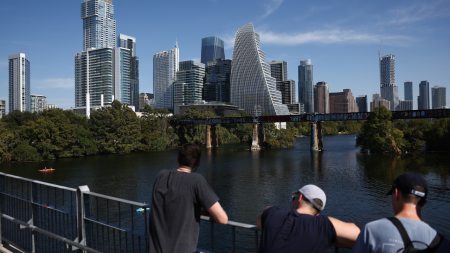The Biden administration sent out mass emails this week to over 800,000 borrowers, notifying them that they qualify for student loan forgiveness. The Education Department announced that these borrowers would be collectively receiving nearly $40 billion in student debt relief.
But the program that underlies this latest initiative is just getting started. Borrowers who did not receive a student loan forgiveness email could still get one. And those who don’t qualify for immediate loan forgiveness could still see significant benefits from the initiative.
Here’s what borrowers should know.
Student Loan Forgiveness Through IDR Account Adjustment
The Biden administration approved the nearly $40 billion in student loan forgiveness under a temporary program called the IDR Account Adjustment. The initiative, first announced over a year ago, was established to address longstanding issues with Income-Driven Repayment programs.
IDR is designed to provide affordable monthly payments to borrowers based on their incomes, along with a safety net in the form of loan forgiveness if borrowers are unable to pay off their balance within 20 or 25 years. Borrowers working in nonprofit or government jobs could receive student loan forgiveness even sooner through the Public Service Loan Forgiveness program, which historically has required that borrowers be on an IDR plan.
But multiple, overlapping issues resulted in many borrowers pursuing IDR and PSLF getting shortchanged. Millions of borrowers were not told that the programs existed, and some were improperly steered into costly forbearances. Administrative problems resulted in borrowers not being credited properly with progress toward student loan forgiveness. And borrowers could unknowingly reset the clock by consolidating their student loans.
The IDR Account Adjustment will allow the Education Department to credit borrowers with time toward student loan forgiveness by counting past loan periods toward IDR and PSLF that previously would have been disallowed. Most past periods of repayment — including prior to consolidation — and many earlier periods of deferment and forbearance can potentially count toward IDR loan forgiveness under the adjustment. Past periods can also count toward PSLF for borrowers who were working in qualifying employment at the time.
First Wave of Loan Forgiveness Before Student Loan Payments Resume
The 800,000 borrowers receiving student loan forgiveness emails this week represent the first wave of approvals. The Education Department determined that these borrowers have reached or exceeded the 2o or 25-year threshold for loan forgiveness after the retroactive credit under the IDR Account Adjustment was applied.
These borrowers are expected to have their loans discharged before student loan payments resume later this summer. Borrowers who have been approved for loan forgiveness can choose to opt out by notifying their loan servicer before August 13.
More Student Loan Forgiveness Is Expected As Adjustment Continues
The Biden administration has billed the IDR Account Adjustment as a one-time adjustment. And it is, in the sense that this is a temporary program that will end.
But the Education Department will actually be running the adjustment repeatedly over the course of the rest of the year and into 2024. That means that borrowers who are close to qualifying for IDR student loan forgiveness, but are a few months short, may still receive student loan forgiveness under the program when the department runs the adjustment again in another couple of months. The department will initiate the adjustment every month or two through at least the first half of 2024. Borrowers who qualify for student loan forgiveness under the adjustment in subsequent months should be notified.
Meanwhile, the Education Department and MOHELA will be processing student loan forgiveness for PSLF borrowers on a rolling basis as they review and approve borrowers’ PSLF Employment Certifications. MOHELA is the department’s PSLF loan servicer.
Borrowers Who Don’t Qualify For Loan Forgiveness Now May Still Benefit
Not every borrower will receive immediate student loan forgiveness under the IDR Account Adjustment. Borrowers may receive retroactive credit toward their 2o or 25-year student loan forgiveness term (or toward PSLF), but still be well short of the threshold for loan forgiveness. However, that retroactive credit will still be beneficial for millions of borrowers, potentially shaving off years of repayment and advancing their progress toward eventual debt relief.
The Education Department’s implementation of the IDR Account Adjustment is currently prioritizing borrowers who have reached the IDR threshold for student loan forgiveness now. Borrowers who receive IDR credit, but are short of their loan forgiveness milestone, should receive more specific details about where they stand sometime in 2024. PSLF borrowers should receive notifications of PSLF credit on a rolling basis.
Some Borrowers Seeking Loan Forgiveness May Need To Take Action
The IDR Account Adjustment is being implemented automatically for all borrowers with government-held federal student loans. This includes all Direct federal loans, as well as some Family Federal Education Loan (FFEL) program loans held by the Department of Education. There is no formal application that borrowers must submit to qualify for, or benefit from, the IDR adjustment.
However, some borrowers will need to take action to qualify for student loan forgiveness or otherwise benefit from the initiative. This includes the following:
- Borrowers with commercially-owned FFEL loans and other non-government-held federal student loans such as Perkins loans must consolidate those loans via the federal Direct consolidation program before December 31, 2023. Other borrowers, such as Parent PLUS borrowers and borrowers with multiple loans that have significantly different histories, may also want to consider consolidation by that deadline to maximize the benefits available under the adjustment.
- Borrowers seeking PSLF credit under the IDR Account Adjustment must complete and submit PSLF Employment Certification forms before December 31, 2023.
- Borrowers who expect to receive significant IDR or PSLF credit under the adjustment, but still be short of the threshold for immediate student loan forgiveness, should consider switching to an IDR plan if they are not already in one as student loan payments resume later this summer.
The Biden administration issued comprehensive guidance on the IDR Account Adjustment in the spring. Borrowers are encouraged to review that guidance, which includes a robust set of Frequently Asked Questions.
Data Glitches Could Interfere With Student Loan Forgiveness Under Adjustment
The Education Department does not have the manpower to manually review 40 million borrower accounts as it implements the IDR Account Adjustment. Instead, the department will be running borrower accounts through computer programs that will automatically count loan periods toward IDR student loan forgiveness.
This method has clear benefits, as implementation will take months rather than many, many years if this had to be implemented manually. However, there will inevitably be data errors or system problems that may result in some erroneous determinations.
Borrowers who believe they qualify for student loan forgiveness under the IDR Account Adjustment, or determine that certain periods that should have been counted were in fact rejected, can request a manual review. Borrowers can submit a complaint via the FSA Feedback System or the Education Department’s Ombudsman Group.
Further Student Loan Forgiveness Reading
Your Student Loan Payment Plan Could Get Eliminated — Here’s Why
Biden Announces $116 Billion In Student Loan Forgiveness, With More Coming
Here’s When Student Loan Payments Resume, And What Borrowers Should Do Now
4 Big Student Loan Updates When Payments Resume (And They Resume Soon)
Read the full article here





